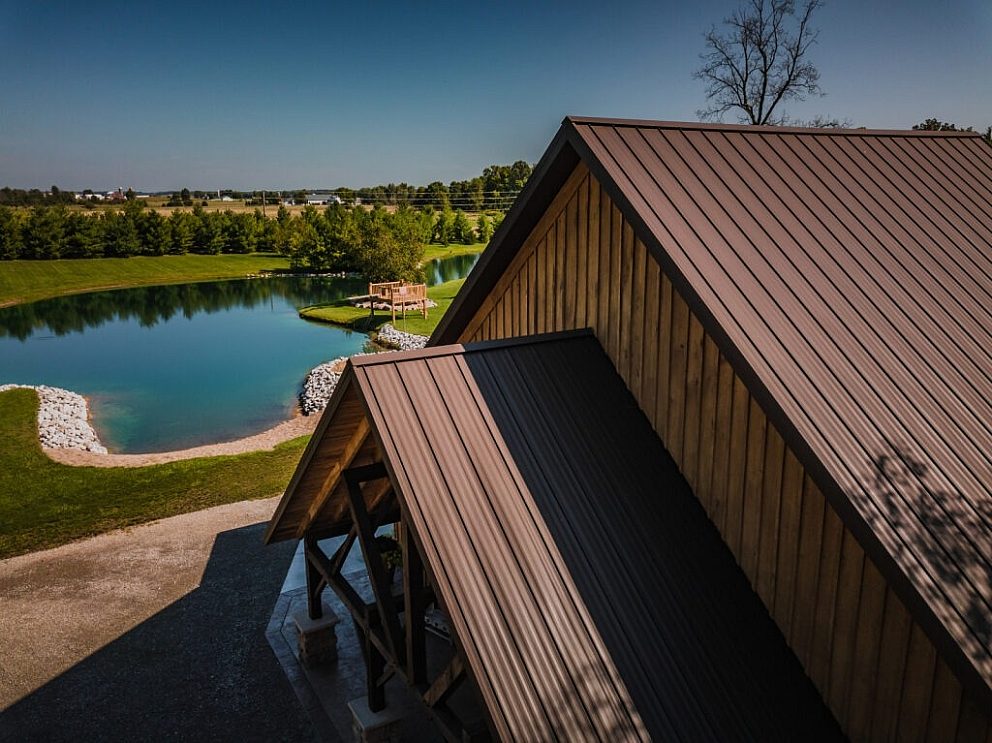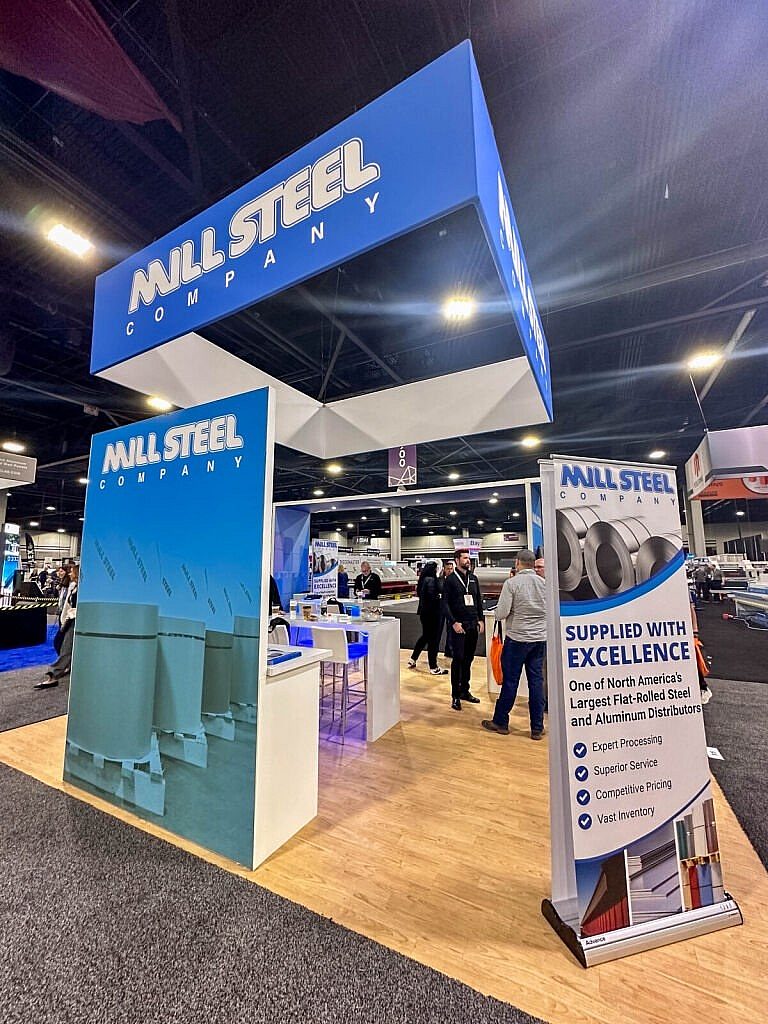The Complete Guide to Stainless Steel Sheet: Grades, Sizes, and Applications

When you are sourcing stainless steel sheet for your next project, choosing the right grade, size, and finish is essential. No matter the application, understanding your options will save time and ensure lasting performance.
This guide covers the basics of stainless steel sheet metal, from common specifications to best practices for buying.
Stainless Steel Sheets
Stainless steel sheet is a flat-rolled product made from corrosion-resistant alloys containing chromium, nickel and other elements. Sheets are typically available in gauges ranging from thin (26 gauge) to thick (7 gauge or heavier). They are available in various finishes to fit specific manufacturing needs.
This versatile material is prized for its strength, resistance to rust and staining, ease of cleaning, and attractive appearance.
Common Grades of Stainless Steel Sheet
Different grades of stainless steel sheet have unique properties suited to various uses. Here are some of the most widely used options:
304 Stainless Steel Sheet
- The most common stainless grade in the world
- Excellent corrosion resistance in a wide range of environments
- Easy to form and weld
316 Stainless Steel Sheet
- Contains molybdenum for enhanced corrosion resistance, particularly against chlorides and marine environments
- More expensive but offers superior performance where corrosion is a concern
430 Stainless Steel Sheet
- A ferritic stainless steel with good oxidation resistance
- More affordable than 304 or 316
Standard Sizes and Thicknesses
Stainless steel sheets are stocked in a variety of sizes and thicknesses. Here are the standard sizes that are the most readily available. Custom dimensions are available as well.
Standard Sheet Sizes:
- 48” x 96”
- 48” x 120”
- 60” x 120”
Common Thicknesses (Gauge):
- 26 gauge: approximately 0.0187 inches
- 20 gauge: approximately 0.0359 inches
- 16 gauge: approximately 0.0598 inches
- 11 gauge: approximately 0.1196 inches
- 7 gauge: approximately 0.1793 inches
Thicker material is typically classified as plate rather than sheet. Stainless sheet is generally 7 gauge (3/16 inch) or thinner, while plate is thicker and used for structural or heavy-duty applications.
Finishes and Surface Treatments
The surface finish of stainless steel sheet impacts its appearance, performance, and fit for specific applications. Here are some common finishes:
#2B Finish
- Smooth, dull, matte appearance
- The most common general-purpose finish
- Suitable for a wide range of industrial and fabrication uses
#4 Finish
- Brushed finish with a uniform, directional grain
- Popular for kitchen equipment, architectural panels, and appliances
#8 Mirror Finish
- Highly reflective, mirror-like surface
- Used for decorative applications and high-end design features
BA (Bright Annealed) Finish
- Bright, reflective finish produced in a controlled atmosphere furnace
- Smoother than #2B, used where an attractive appearance is important
To learn more about common stainless steel finishes and their characteristics, view our Stainless Steel Surface Finish Guide.
Applications for Stainless Steel Sheet
Small specification choices can have an impact on long-term performance and fabrication costs of stainless sheets. Below are common applications along with some insider tips to help make an informed purchasing decision.
Food Processing and Commercial Kitchens
- Typical Uses: Work tables, sinks, conveyor systems, splash panels
- Grades: 304 is standard for most food contact surfaces; 316 is strongly recommended if the environment involves frequent exposure to chlorides (e.g., tomato processing, brining)
- Tip: Even in dry areas, avoid using 430 stainless if the equipment will be washed down frequently—chloride stress corrosion cracking can occur over time.
- Finish Consideration: A #4 finish improves cleanability and hides scratches; some buyers specify a finer grain (180 grit) for aesthetics.
Architectural and Design Projects
- Typical Uses: Elevator cabs, column wraps, handrails, public art installations
- Grades: 304 for interior; 316 preferred for exterior installations near coastlines or de-icing salts
- Tip: For exterior panels, specify a low reflectivity brushed finish to reduce glare and minimize the appearance of fingerprints.
- Finish Consideration: #8 mirror finish requires protective film and care during installation—avoid dragging sheets to prevent surface distortion.
Chemical and Pharmaceutical Processing
- Typical Uses: Tanks, hoppers, ductwork, process equipment
- Grades: 316L (low carbon) is commonly selected to minimize sensitization and intergranular corrosion during welding
- Tip: If welding is required, consider dual-certified 316/316L material to avoid carbide precipitation and maintain corrosion resistance.
- Finish Consideration: BA or #2B finishes are often specified for cleanability; note that rougher finishes can harbor contaminants.
Marine and Coastal Applications
- Typical Uses: Enclosures, structural supports, boat hardware
- Grades: 316 or duplex stainless steels (e.g., 2205) in severe salt spray environments
- Tip: 316 resists chloride attack but still requires periodic cleaning; neglecting maintenance can lead to “tea staining,” an aesthetic discoloration that doesn’t necessarily compromise integrity but affects appearance.
- Finish Consideration: Smooth finishes (e.g., BA) resist buildup of salt deposits better than rougher brushed finishes.
Transportation and Automotive
- Typical Uses: Trailer skins, truck bodies, fuel tanks
- Grades: 304 for durability; 430 can be used for cost-sensitive trim but offers less corrosion resistance
- Tip: When forming stainless sheet into tight radii, note that higher-nickel grades (304, 316) have greater elongation and formability compared to ferritic grades.
- Finish Consideration: #2B is common for hidden surfaces; #4 for visible panels.
Appliances and Consumer Goods
- Typical Uses: Refrigerator and oven panels, decorative covers
- Grades: 304 and 430 are typical; 441 is sometimes used as a cost-effective ferritic grade with better weldability than 430
- Tip: For parts exposed to heat cycles (e.g., oven doors), thermal expansion differences can cause warping—design allowances and correct fasteners help mitigate this.
Fabrication and Industrial Equipment
- Typical Uses: Machine guards, enclosures, workstations
- Grades: 304 standard; 316 when high corrosion resistance is critical
- Tip: For laser cutting thicker gauges (>3/16"), specify laser flat sheet or precision-leveled material to improve cut consistency and reduce rework.
- Finish Consideration: #2B is typical, but confirm if your process (like adhesive bonding or powder coating) requires a specific surface roughness.
No matter the application, always request:
- Mill test reports to verify chemical composition and mechanical properties.
- Protective PVC film for finishes prone to scratching (#4, #8).
- Traceability documentation for critical applications (e.g., pharma, food, marine).
Why Source Stainless Steel Sheet from Mill Steel Company?
Mill Steel Company is a nationwide supplier committed to delivering high-quality stainless steel sheet in a wide range of grades, sizes, and finishes. Our dedicated team combines decades of industry experience with robust inventory and quick order fulfillment to keep your projects on track.
We partner with customers across manufacturing, construction, food service, and many other sectors. You can rely on us for expert help and dependable delivery across North America. We offer both standard sheets and custom sizes.
Contact us to learn more about our stainless steel sheet metal products or request a quote today!


